 In earlier installments, I’ve talked about health concerns for active people over 40, as well as the importance of strength and functional training for people in this age group. As promised, I will now focus in on strength training, and we’ll start with your butt.
In earlier installments, I’ve talked about health concerns for active people over 40, as well as the importance of strength and functional training for people in this age group. As promised, I will now focus in on strength training, and we’ll start with your butt.
The glute complex (your hips) has the greatest potential for strength and power in the human body, and is the foundation for all ground-based movement. If used properly, it lifts things up (like the grandkids) and spares the low back. Let’s call this the “lifting things up” or the dead-lift pattern.
The Lost Glutes
Because of the enormous amount of sitting done in our modern lifestyle, many adults can’t find their glutes (through muscle activation) with a map, hand mirror, and a flashlight. When you place people on their backs on the floor with their knees up and feet planted on the ground, then have them try to raise their hips off the floor by contracting just their glutes, many will fire their hamstrings while their glutes remain totally quiet. This situation has been referred to as glute amnesia; more accurate would be to say it’s a disconnect between brain and muscle. The body will find a way to accomplish the desired task by resorting to Plan B (in this case, the hamstrings) if the primary movers, the glutes, are offline. The hips will move off the ground but at a cost: inefficient movement, lower performance potential, and higher risk of injury to the Plan B muscles—and also to surrounding tissue and joints.
Foundational Movement: The Hip Hinge
Learning to properly hinge the hips and to activate the glutes is critical for skilled and graceful movement and injury prevention as you age. This is life quality for now and into your future. So let’s try the foundational movement, the hip hinge:
- Stand with your feet about hip width apart and hands resting on the front of your thighs. You can also hold a light barbell or a pair of light dumbbells to provide a little resistance.
- With your lower legs perpendicular to the ground, push your hips backward while bending forward at the hips. Your upper body will fold over with your back in a straight line from the tailbone to the back of your head.
- Do not squat and do not bend forward at the waist (lumbar spine).
- Once your hands reach your knees, pause, focus on your glutes, and tighten them as you try to push the ground away with your feet. Return to standing with a straight line from the heels to the back of your head.
- Rinse and repeat until the movement feels natural.
- If in doubt, keep your hips higher while you bend forward and sense your upper body closing the distance with the ground.
- If you have health issues, balance problems, or serious muscle weakness, seek proper medical assistance. Watch this video as a guide.
Your body is programmed to avoid falling on your face by trying to stay more upright and bending your knees more into a squat pattern if it doesn’t sense proper muscle activation. If you learn to position your skeleton into the correct architecture for the movement you are attempting and recruit the target muscles for that movement (in this case, the glutes and core), you will not face-dive. If you do splat, see #6 above (and please post the video on YouTube).
Every day, at some point, you will need to bend over (hinge) and pick something up. Conventional wisdom dictates that we lift with our legs from a squat position, but our greatest power for this movement comes from the hinge pattern and the glutes. That’s why we call it the Big House. Heed the immortal words from Sir Mix-A-Lot: “You can do side bends or sit-ups, but please don’t lose that butt.”
This blog was written by Rick Huse, CSCS, WKC Competition Coach. To find out more about the NIFS bloggers, click here.


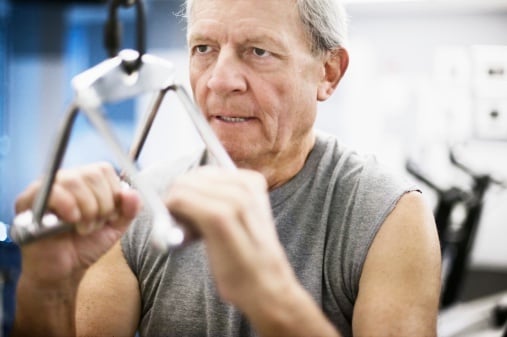 For many in this age group, other medical conditions seem to appear from out of nowhere. Theories for why range from genetics to reduction of stem cells, but the fact remains: unexpected conditions and diseases show up uninvited and certainly unwanted from about 45 and beyond. If you are in this age group and actively training, you need to know a lot more about your body, especially your age-related limitations.
For many in this age group, other medical conditions seem to appear from out of nowhere. Theories for why range from genetics to reduction of stem cells, but the fact remains: unexpected conditions and diseases show up uninvited and certainly unwanted from about 45 and beyond. If you are in this age group and actively training, you need to know a lot more about your body, especially your age-related limitations. 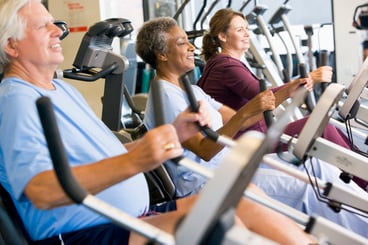
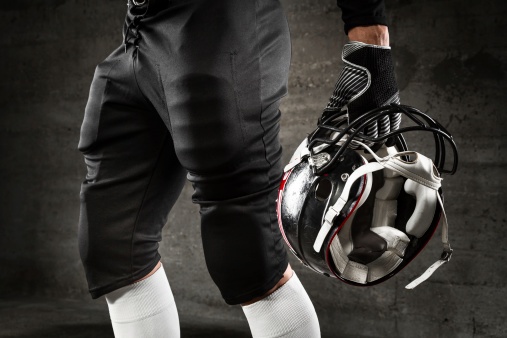 In NFL and college football, each week, a star player is hit with a sidelining injury. Possibly lost for multiple weeks, months, or at worst, the whole season. Injuries that are usually the result of bad luck or not being as physically prepared as they could have been. Hopefully your team, **knock on wood**, does not or will not have to deal with this at any point during their season. My team, my beloved
In NFL and college football, each week, a star player is hit with a sidelining injury. Possibly lost for multiple weeks, months, or at worst, the whole season. Injuries that are usually the result of bad luck or not being as physically prepared as they could have been. Hopefully your team, **knock on wood**, does not or will not have to deal with this at any point during their season. My team, my beloved  As you can see, progression of strength (and power with other lifts) has to be maintained year round. This goes for all athletes throughout their seasons. If they want to continue to improve, they must prevent the loss. It is as important of a cycle of training as any. Without a properly structured in-season maintenance phase, you will be starting from the same place every time you start a new offseason training program.
As you can see, progression of strength (and power with other lifts) has to be maintained year round. This goes for all athletes throughout their seasons. If they want to continue to improve, they must prevent the loss. It is as important of a cycle of training as any. Without a properly structured in-season maintenance phase, you will be starting from the same place every time you start a new offseason training program.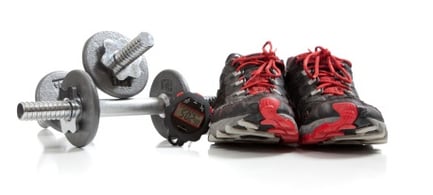 We’ve all heard the saying, “There are no stupid questions,” but there are a lot of questions that take a lot of effort and thought to answer correctly. One such question comes to mind when we are discussing fitness: “What should I do first, cardio or strength training?”
We’ve all heard the saying, “There are no stupid questions,” but there are a lot of questions that take a lot of effort and thought to answer correctly. One such question comes to mind when we are discussing fitness: “What should I do first, cardio or strength training?” 
 I recently ended my rugby career at Indiana University. I had been playing for 9 years, and competed in various other sports before that. Until now, I have always had a coach scheduling practices and creating workouts for me, and have always pushed myself to my limits for the team.
I recently ended my rugby career at Indiana University. I had been playing for 9 years, and competed in various other sports before that. Until now, I have always had a coach scheduling practices and creating workouts for me, and have always pushed myself to my limits for the team. 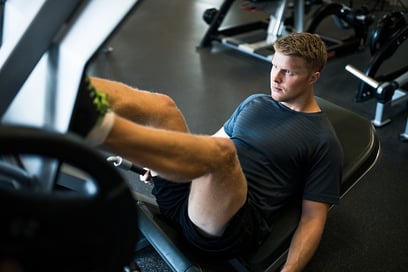 You have finally achieved your goal of adding some lean muscle mass, so what now? Where do you go next? The next step I would take would be to train your body to use those newly developed muscles to their fullest potential. This increase in strength building can come from numerous sources, some of which you may have already experienced.
You have finally achieved your goal of adding some lean muscle mass, so what now? Where do you go next? The next step I would take would be to train your body to use those newly developed muscles to their fullest potential. This increase in strength building can come from numerous sources, some of which you may have already experienced. 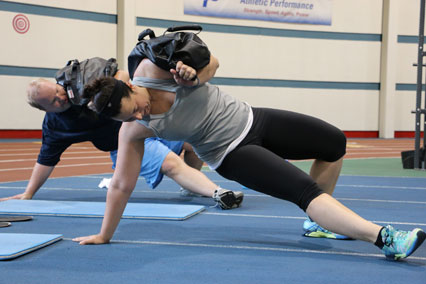 When you think of the term “economy,” what is the first thing that comes to mind? Money would probably be number one, and maybe government and the idea of debt would more than likely come to mind next. There is another economy that should be as well known, and that is your training economy. Simply put, your training economy is the rate of return that you get from the methods and practices of your current training program.
When you think of the term “economy,” what is the first thing that comes to mind? Money would probably be number one, and maybe government and the idea of debt would more than likely come to mind next. There is another economy that should be as well known, and that is your training economy. Simply put, your training economy is the rate of return that you get from the methods and practices of your current training program.  Pre COVID, NIFS held their Annual Powerlifting Competition, putting some of the strongest individuals in the building on display. Members and nonmembers alike, come together to celebrate strength and fitness by performing three lifts with the hopes of reaching the highest total weight possible. The three lifts performed are the squat, bench press, and deadlift. Each competitor performs very well and the hard work they put in until competition day is evident.
Pre COVID, NIFS held their Annual Powerlifting Competition, putting some of the strongest individuals in the building on display. Members and nonmembers alike, come together to celebrate strength and fitness by performing three lifts with the hopes of reaching the highest total weight possible. The three lifts performed are the squat, bench press, and deadlift. Each competitor performs very well and the hard work they put in until competition day is evident. BOSU. Does that stand for “both sides utilized,” or “both sides up”? To some of us, it’s a half-blue ball thing that makes our crunches doable; to others, if done right, it can make some exercises downright brutal. Whatever the case may be, the BOSU ball is an intriguing piece of exercise equipment that won’t soon be tossed in the
BOSU. Does that stand for “both sides utilized,” or “both sides up”? To some of us, it’s a half-blue ball thing that makes our crunches doable; to others, if done right, it can make some exercises downright brutal. Whatever the case may be, the BOSU ball is an intriguing piece of exercise equipment that won’t soon be tossed in the  When we take a look at progressions and regressions for BOSU exercises, there are several aspects we can touch on:
When we take a look at progressions and regressions for BOSU exercises, there are several aspects we can touch on: